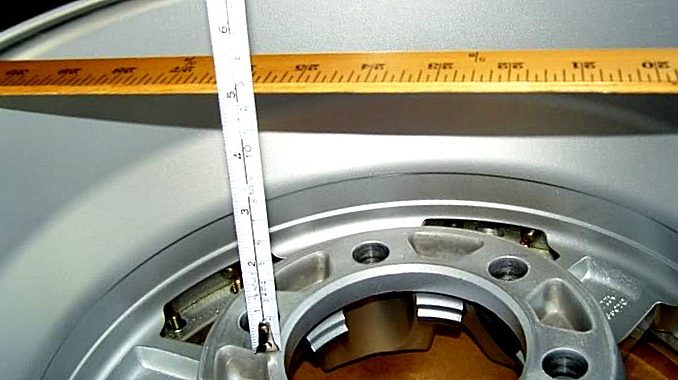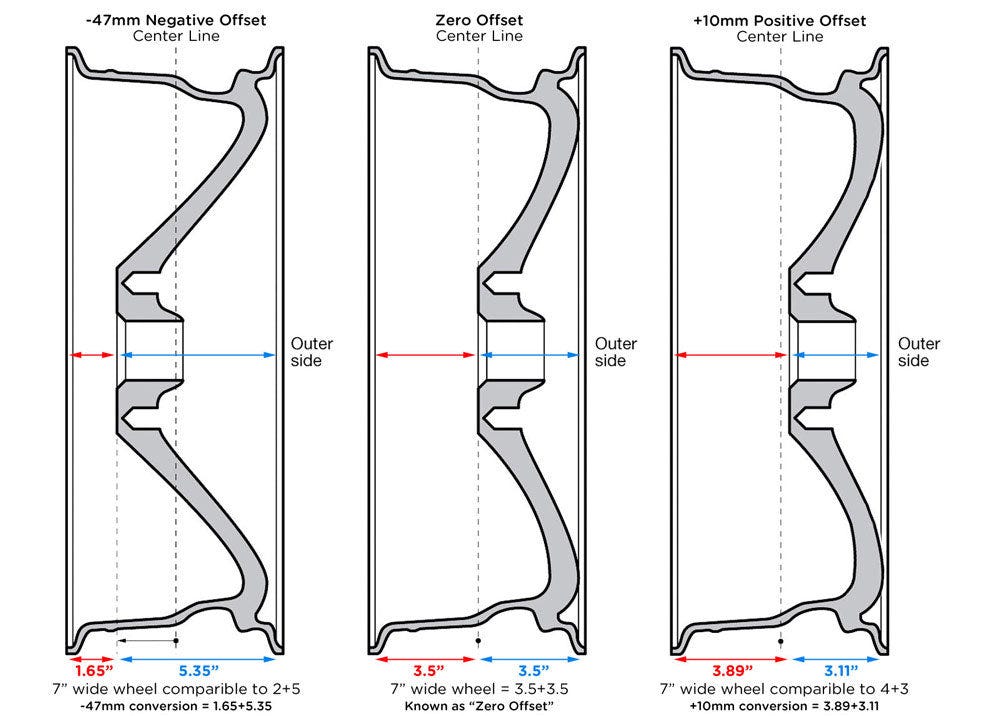How to Measure Backspacing
Measure backspacing by placing a straight edge on the wheel’s mounting surface and measuring to the back lip. Backspacing determines how far the wheel sits within the wheel well.
Understanding how to measure backspacing on your wheels is crucial for ensuring proper fitment and avoiding potential rubbing or clearance issues. By accurately measuring backspacing, you can determine if a particular wheel will work for your vehicle. This measurement is essential when selecting aftermarket wheels or when upgrading to a different wheel size.
In this guide, we will explore the steps to measure backspacing effectively and why it is important for your vehicle’s overall performance and appearance.
What Is Backspacing
What is Backspacing?
Backspacing is a crucial measurement when it comes to wheels and tires, determining the distance from the mounting surface to the back edge of the wheel. This measurement is imperative in ensuring proper fitment, stability, and performance of the wheels on a vehicle. Knowing the backspacing of a wheel is essential for achieving the desired stance and avoiding clearance issues with the vehicle’s suspension components and inner fenders.
Definition
Backspacing is the distance from the mounting surface of the wheel to the inboard flange. It is measured in inches and determines how far the wheel’s mounting surface is from the inner edge of the wheel.
Importance
The backspacing of a wheel is vital as it directly impacts the positioning of the wheel inside the wheel well, affecting tire clearance, steering characteristics, and overall vehicle performance. Proper backspacing will ensure that the wheels are adequately positioned within the fenders and that there are no clearance issues with the suspension components. Additionally, it plays a significant role in achieving the desired aesthetic appeal and stance of the vehicle.

Credit: www.thesamba.com
Tools Needed
To measure backspacing accurately, you will need a few essential tools. These include a straightedge ruler, a tape measure or caliper, and a marker or pencil to mark the measurements. With these tools, you can determine the backspacing of your wheels effectively.
Tape Measure
Use a durable tape measure for accurate measurements.
Straight Edge
A straight edge helps in ensuring precise alignment.
Marker
A marker to make clear markings on the wheel for calculations.
Step-by-step Process
Welcome to the Step-by-Step Process for measuring backspacing. To ensure accuracy, follow these straightforward instructions:
Remove The Wheel
Begin by taking off the wheel from the vehicle to access the backside for measuring.
Measure The Width
Determine the total width of the wheel from one bead seat to the opposite bead seat.
Find The Backspacing
Using a straightedge ruler, measure from the back of the wheel mounting pad to the bead seat.
Subtract the width measurement from the backspacing measurement to calculate the backspacing.

Credit: m.roadkillcustoms.com
Interpreting Measurements
When measuring backspacing, it is crucial to interpret the measurements accurately. Understanding the different types of backspacing – positive, negative, and zero – is essential for ensuring the proper fitment of wheels on a vehicle.
Positive Backspacing
Positive backspacing refers to a measurement where the mounting surface of the wheel is located toward the front or outer side of the wheel centerline. This results in the wheel being positioned further away from the vehicle’s suspension and can provide clearance for larger brakes or other components.
Negative Backspacing
Negative backspacing, on the other hand, indicates that the mounting surface of the wheel is positioned toward the rear or inner side of the wheel centerline. This causes the wheel to sit closer to the vehicle’s suspension. Negative backspacing can lead to the wheel rubbing against the suspension or other internal components if not properly accounted for during fitment.
Zero Backspacing
Zero backspacing occurs when the mounting surface of the wheel is exactly at the wheel’s centerline. This results in the backspacing being split evenly on both the inner and outer sides of the wheel. It’s important to note that zero backspacing is less common and may require additional consideration during fitment to prevent clearance issues.
Calculating Wheel Offset
Calculating wheel offset is an essential step in measuring backspacing. It refers to the distance from the mounting surface of the wheel to the centerline of the wheel. By knowing the wheel offset, you can determine how the wheel will sit in relation to the vehicle’s suspension components and fender wells. This information is crucial to ensure proper fitment and avoid clearance issues. To calculate the wheel offset, you can use a simple formula. Let’s take a closer look.
Formula
The formula to calculate wheel offset is:
Wheel Offset = Backspacing – (Wheel Width / 2)
Let’s break down the formula into its components:
- Backspacing: It is the distance from the mounting surface to the wheel’s inner edge.
- Wheel Width: It refers to the width of the wheel from one edge to another.
By subtracting half of the wheel’s width from the backspacing, you can determine the wheel offset. This value is typically represented in millimeters or inches, depending on the unit of measurement you prefer.
Example
Let’s consider an example to understand how to calculate wheel offset:
You have a wheel with a backspacing of 5 inches (127mm), and its width is 8 inches (203mm).
Using the formula mentioned earlier:
Wheel Offset = 5 inches – (8 inches / 2) = 1 inch (25.4mm)
In this example, the wheel offset is 1 inch, or 25.4 millimeters.
By knowing the wheel offset, you can determine whether a particular wheel will fit your vehicle correctly. It helps you avoid issues like rubbing against the suspension or fender wells, ultimately ensuring a smooth and safe ride.

Credit: www.efxtires.com
Frequently Asked Questions Of How To Measure Backspacing
How Do You Calculate Backspacing?
To calculate backspacing, measure the distance from the wheel’s rear edge to the mounting surface. Subtract the wheel’s width, divide by two, and you have the backspace. Use this formula: (Wheel width – mounting surface distance)/2 = backspace.
What Is 4.5 Backspacing On Wheels?
4. 5 backspacing on wheels refers to the distance from the mounting surface to the wheel’s inner edge. It determines how far the wheel sits in or out from the vehicle’s fender.
What Does 5.5 Backspacing Mean?
5. 5 backspacing refers to the distance from the mounting surface to the wheel’s inner edge.
How Do I Measure My Wheel Offset?
To measure your wheel offset, use a straight edge to gauge from the mounting surface to the wheel’s outer edge. Subtract the wheel width, then divide by two for backspacing. Positive offset extends inward, while negative extends outward.
What Is Backspacing And How Is It Measured?
Backspacing refers to the distance between the mounting surface of a wheel and the centerline of the rim. It is measured in inches.
Why Is It Important To Measure Backspacing?
Measuring backspacing is crucial to ensure proper fitment of wheels and tires, preventing rubbing or clearance issues.
How Can I Measure Backspacing On My Wheels?
To measure backspacing, place a straight edge across the rim’s mounting surface and measure the distance to the centerline of the wheel.
Conclusion
Understanding and measuring backspacing is crucial for ensuring proper wheel fitment and preventing potential issues. By following the steps outlined in this guide, you can accurately measure the backspacing of your wheels and make informed decisions when purchasing new ones.
By applying this knowledge, you can enhance the performance and visual appeal of your vehicle.

